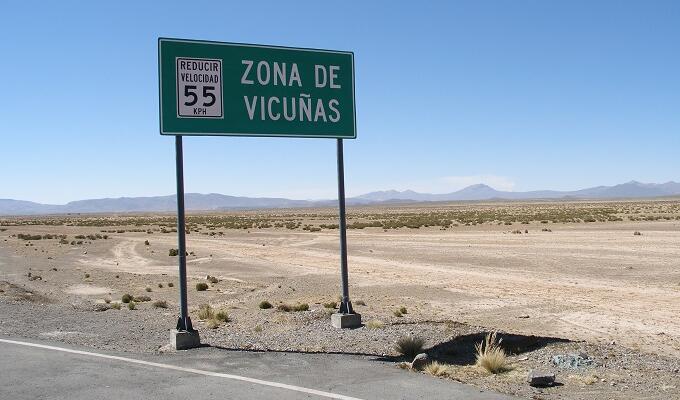


How trade helped save the Andean vicuña from extinction (en)
Once overhunted and on the brink of extinction, the vicuña is thriving again in South America’s Andes mountains. Granting mountain communities the right to shear and legally trade the animal’s lucrative wool has improved livelihoods for low-income households in the region, as growing demand from the international luxury fashion market has created strong incentives for vicuña conservation, according to a new ITC study.
A South American member of the camel family , the vicuña is native to the high plains of the Andes. The animal’s exceptionally fine hair was historically used to make clothing for the nobility of the Incan Empire. Following the Spanish conquest in the 16th century, traditional systems of herd management broke down, giving way to indiscriminate hunting for hides, leather, and fibre that by the late 1960s had reduced the vicuña population from an estimated 2 million to only 10,000 animals.
Today, the vicuña population is close to half a million, and is no longer considered to be in great danger of extinction. The new publication, ‘Trade in Vicuña Fibre: Implications for Conservation and Rural Livelihoods’ describes how the turnaround happened, and points to ways to further improve livelihoods and biodiversity conservation in the communities that are home to the animal.
Move from trade ban to sustainable use policy
In 1969, Peru and Bolivia agreed to a ban on the hunting and sale of vicuña. Over the next decade, neighbouring Argentina, Chile and Ecuador joined the ban. The International Union for the Conservation of Nature (IUCN) declared the species to be endangered, and the United States prohibited the trade and trafficking of vicuña products within its territory. When the Convention on International Trade in Endangered Species of Flora and Fauna (CITES) entered into force in 1975, vicuñas were included in its ‘most endangered’ list, and subject to a commercial trade ban.
The trade bans provided an initial measure of protection to the vicuna population. In 1979, Argentina, Bolivia, Chile, Peru and Ecuador took a new policy direction, signing the Convention for the Conservation and Management of the Vicuña. The new agreement continued to promote conservation and management, while allowing for regulated trade in vicuña products.
Each of the governments implemented the policy differently. Starting in 1980, Peru, home to the largest vicuña population, moved to create legal markets for vicuña fibres, in the hope that revenue from the high-quality wool would raise incomes and give communities an incentive for wildlife conservation. Importantly, the government gave the right to shear fibre from live vicuñas to local farmer organizations (and later to companies), creating markets for wool from live but not dead animals. Ultimately, a live vicuña came to be worth many times more than a poached one.
In 1994, CITES lifted its ban on international trade in vicuña fibre and garments, subject to careful checks in importing countries as well as certification for traded products. Exports began to take off, reaching 2500 kilograms of vicuna wool by 1998, and close to 8000 kg by 2015. Meanwhile, the vicuña population continued to grow, surpassing 460,000 by 2012. In 2008, IUCN downgraded vicuñas to ‘least concern’ on its list of threatened species.
The study finds that over the last ten years, trade in vicuña fibre has increased by 78%, reaching an value of approximately $3.2 million in 2016 , mainly from Peru. Italy accounts for 84% of global imports of vicuña wool, with the biggest buyer being the Italian luxury brand Loro Piana, which subsequently processes, and, with a handful of other mainly European fashion companies, produces vicuña clothing for sale around the world. One company in Peru, Incalpaca, also produces vicuña clothing products for sale at home and abroad.
Legal markets crowd out illegal ones
On the basis of stakeholder interviews and a literature review, the study concludes that assigning rights to communities to shear, process and trade the wool has been the major factor in the conservation success. The participation of the private sector in collaboration with regulators and community organizations was crucial in enabling the establishment of an international value chain.
While illegal hunting has not stopped since 1980, the rapid growth in the legal market has effectively ‘crowded out’ or outcompeted the illegal trade, with communities incentivized to maintain herds and trade with legal buyers.
Remaining challenges and opportunities
Despite the considerable development and conservation successes associated with vicuña trade, there remain a series of challenges on both fronts.
The recovering vicuña population also faces threats from competing land uses such as domestic livestock as well as climate change which is reducing water availability.
In terms of communities’ livelihoods, only approximately 2 to 6% of the total value of vicuña products is captured by the source communities. Typically, it is women in these communities who clean and process the sheared fibres, often by hand, before they are shipped to domestic or international buyers. The study suggests a variety of means to enable upgrading in the value chain, from extension services to promote better herd welfare through to capacity building to improve processing techniques and fostering better connections to a range of competing buyers. Collective organization by producers, together with better access to market information, could help redress some of their bargaining power imbalance with buyers, enabling them to gain more from strong international demand.
To read the study, click here.



